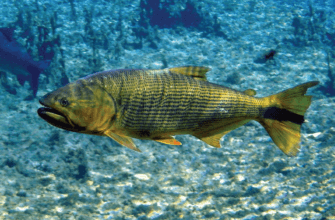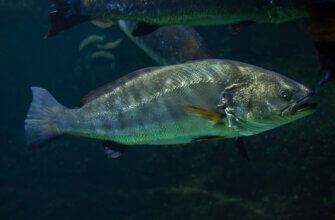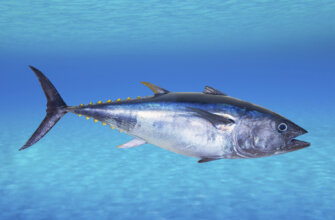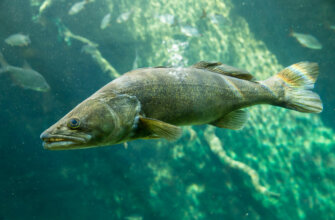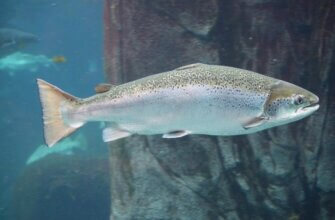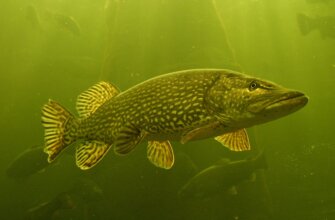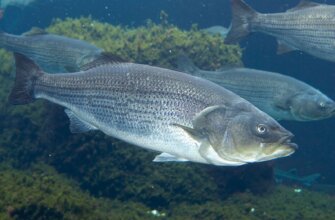Flounder is a type of fish that belongs to the family Pleuronectidae. It is a flatfish known for its distinctive body shape and coloring. Flounders are found in oceans and seas around the world, primarily in shallow coastal waters. They are bottom-dwelling fish that spend much of their time lying on the seafloor.
One of the most noticeable features of flounders is their asymmetrical body. As juveniles, they have a normal body shape with eyes on either side of their head. However, as they grow, one eye migrates to the other side, resulting in both eyes being located on the same side of the body. This adaptation allows flounders to camouflage themselves by lying flat on the seafloor and blending in with the surroundings.
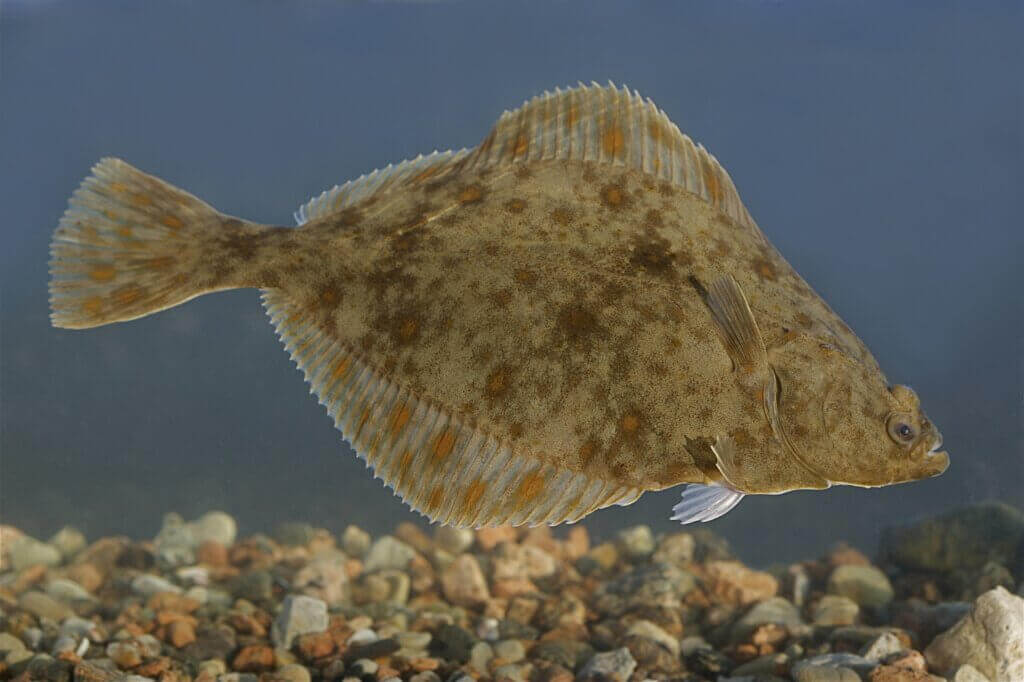
Flounders have a variety of species, and their size and appearance can vary depending on the specific type. They typically have a flattened body with a small mouth and both eyes on one side. The upper side of their body is usually brown or mottled, providing effective camouflage against predators and prey. Flounders also have a white or pale underside.
These fish are carnivorous and feed on smaller fish, crustaceans, and other invertebrates. They are opportunistic predators, lying in wait for their prey and then striking quickly. Flounders have a good sense of vision and can detect movement, allowing them to locate their prey even when partially buried in the sand.
Flounders are commercially valuable and are often sought after by both recreational and commercial fishermen. They are also popular as a food source and can be prepared in various ways, such as frying, baking, or grilling.
It’s important to note that the information provided here represents a general overview of flounders. There are numerous species within the flounder family, each with its own unique characteristics and habitat preferences.
Species
Flounder is a common name that refers to several species of flatfish belonging to the family Pleuronectidae.
Here are a few notable species of flounders:
- European Flounder (Platichthys flesus). This species is found in the coastal waters of the northeastern Atlantic Ocean, ranging from the Baltic Sea to the Mediterranean. It has a diamond-shaped body and can grow up to 50 centimeters in length.
- Summer Flounder (Paralichthys dentatus). Also known as fluke, this species is native to the western Atlantic Ocean, ranging from Nova Scotia to the Gulf of Mexico. It has a laterally compressed body and can reach lengths of over 90 centimeters.
- Winter Flounder (Pseudopleuronectes americanus). Found in the northwest Atlantic Ocean, from Labrador to Georgia, the winter flounder has an oval-shaped body and can grow up to 61 centimeters in length. It is an important commercial fish species.
- Pacific Halibut (Hippoglossus stenolepis). While commonly referred to as halibut, it is actually a type of large flounder. It is native to the North Pacific Ocean, ranging from Alaska to California. Pacific halibut can reach impressive sizes, with some individuals exceeding 2.5 meters in length and weighing over 300 kilograms.
- Olive Flounder (Paralichthys olivaceus). This species is native to the northwest Pacific Ocean, particularly in coastal waters of East Asia, including Japan and Korea. It has a flat and elongated body, and it is highly valued in Asian cuisine.
These are just a few examples of flounder species, and there are many more found in various regions around the world. Each species has its own unique characteristics, distribution, and habitat preferences.
Appearance
Flounders have a distinct appearance that sets them apart from other fish.
Here are some general characteristics of their physical appearance:
- Flat Body: Flounders have a flattened body that is highly adapted for life on the seafloor. Their body is laterally compressed, meaning it is broad from side to side and thin from top to bottom.
- Asymmetrical Shape: One of the most notable features of flounders is their asymmetrical body shape. As they mature, one eye migrates to the other side of the body, resulting in both eyes being located on one side. This adaptation allows flounders to lie flat on the seafloor and blend in with their surroundings.
- Coloration: Flounders typically have a coloration that provides effective camouflage. The upper side of their body is often brown, mottled, or speckled, which helps them blend in with the sandy or rocky seabed. This coloration assists in ambushing prey and avoiding predators. The underside of a flounder is usually white or pale in color.
- Fin Arrangement: Flounders have both their dorsal (back) and anal (underside) fins extending around their body, encircling it with a continuous fin margin. The caudal fin (tail fin) is usually rounded or truncate in shape.
- Mouth and Eyes: Flounders have a relatively small mouth with sharp teeth. Their eyes are positioned on the side of their body that faces upward, allowing them to see potential prey above them. The eyes are usually large and well-developed, providing good vision.
It’s important to note that the specific appearance of flounders can vary among different species. The size, coloration patterns, and other characteristics may differ depending on the particular flounder species and their habitat.
Size and weight
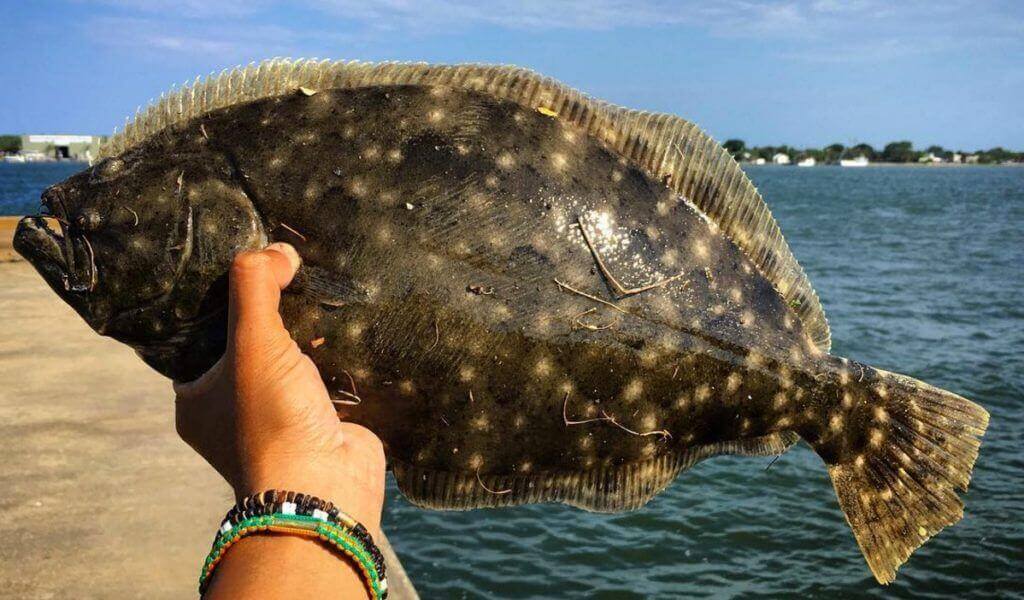
The size and weight of flounders can vary depending on the species.
Here are some general guidelines regarding their size:
- European Flounder (Platichthys flesus). European flounders can reach lengths of up to 50 centimeters (20 inches).
- Summer Flounder (Paralichthys dentatus). Summer flounders, also known as fluke, can grow much larger than other flounder species. They can reach lengths of over 90 centimeters (35 inches) and can weigh up to 10 kilograms (22 pounds).
- Winter Flounder (Pseudopleuronectes americanus). Winter flounders typically range from 30 to 61 centimeters (12 to 24 inches) in length and can weigh up to 2 kilograms (4.4 pounds).
- Pacific Halibut (Hippoglossus stenolepis). Pacific halibut, while technically a type of flounder, are known for their enormous size. They can grow to be one of the largest flatfish species, with some individuals exceeding 2.5 meters (8 feet) in length and weighing over 300 kilograms (660 pounds).
- Olive Flounder (Paralichthys olivaceus). Olive flounders usually range from 40 to 60 centimeters (16 to 24 inches) in length and can weigh up to 5 kilograms (11 pounds).
It’s important to remember that these size ranges are general estimates, and individual flounders can vary in size depending on factors such as their age, location, and available food sources. Additionally, there are many other species of flounders not mentioned here, each with its own unique size range.
Diet
Flounders are carnivorous fish that have a diet primarily consisting of other smaller fish and invertebrates. Their feeding habits are influenced by their bottom-dwelling lifestyle and their ability to camouflage themselves on the seafloor.
Here are some common elements of a flounder’s diet:
- Fish – flounders feed on a variety of smaller fish species. They often lie in wait on the seafloor, partially buried or camouflaged, and ambush passing fish. When an opportunity arises, they strike quickly, engulfing their prey with their relatively large mouth and sharp teeth. They are opportunistic predators, feeding on available fish species in their habitat.
- Crustaceans – flounders also consume crustaceans such as crabs, shrimps, and small lobsters. They use their keen eyesight to detect the movements of these bottom-dwelling invertebrates, and then they pounce on them or use suction to capture them.
- Worms and Invertebrates – flounders feed on various worms, mollusks, and other invertebrates that reside on or near the seafloor. They can detect the presence of these organisms through their sense of smell and sight and capture them using their quick movements.
- Small Crustaceans and Larvae – in addition to larger crustaceans, flounders also consume smaller crustaceans like copepods and amphipods. They also feed on the larvae of various marine organisms, taking advantage of the abundance of these organisms in the water column.
It’s important to note that the specific diet of a flounder can vary depending on its size, habitat, and availability of prey. Different species of flounders may also have slightly different preferences in terms of the types of fish and invertebrates they consume.
Behavior
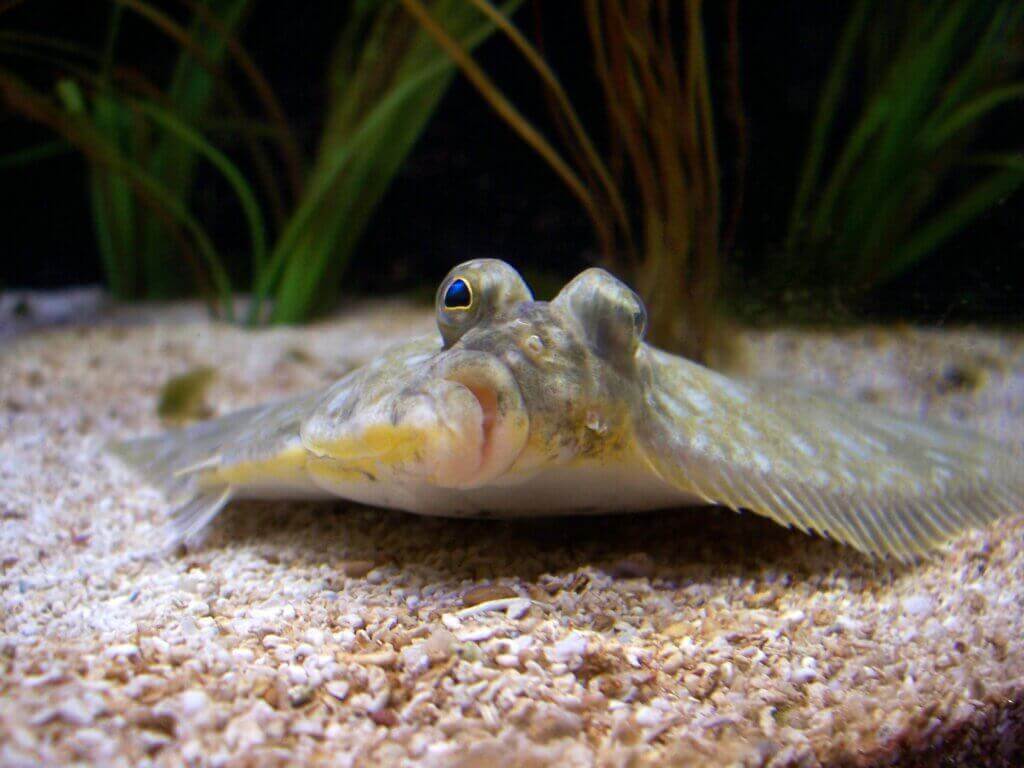
Flounders exhibit several interesting behaviors that are characteristic of their flatfish adaptations and their bottom-dwelling lifestyle.
Here are some notable behaviors of flounders:
- Camouflage. Flounders are masterful at blending in with their surroundings. They have the ability to change their skin coloration and patterns to match the seafloor, allowing them to effectively camouflage themselves and remain hidden from both predators and prey. They often lie flat on the seafloor, partially buried in sand or sediment, using their flattened body shape and mottled coloration to blend in seamlessly.
- Ambush Predation. Flounders are ambush predators, relying on their camouflage and patient waiting to catch their prey. They often lie in wait for unsuspecting fish or invertebrates to pass by, and then they use quick bursts of speed to strike and engulf their prey. Their upward-facing eyes and ability to change coloration allow them to spot and target prey above them.
- Burrowing and Sand-Sifting. Flounders have been observed burrowing into the sediment or sand on the seafloor. They use their body and fins to dig into the substrate, creating a depression or burying themselves partially. This behavior helps them find protection and avoid detection. They may also engage in sand-sifting, where they use their mouth and gill rakers to filter and capture small invertebrates or organisms present in the sediment.
- Nocturnal Activity. Some flounders, such as the European flounder, are known to be more active during the night. They exhibit increased feeding and foraging behaviors under cover of darkness when they have a better chance of surprising their prey.
- Migration and Spawning. Flounders may undergo seasonal migrations for spawning purposes. They often move from deeper waters to shallower coastal areas or estuaries to reproduce. During the spawning season, female flounders release eggs into the water, and males release sperm to fertilize them. The eggs hatch into larvae, which undergo a metamorphosis process as they develop into juvenile flounders.
- Solitary Behavior. Flounders are generally solitary fish and do not form large schools or groups. They tend to occupy their own territory or roam within a certain range, although some species may aggregate in certain areas where food is abundant or during spawning periods.
These behaviors contribute to the survival and adaptation of flounders in their respective habitats, allowing them to effectively hunt, avoid predation, and reproduce successfully.
Spawning
Flounders have specific reproductive behaviors and undergo spawning to reproduce.
Here is an overview of the spawning process in flounders:
- Seasonal Timing: Flounders typically have specific spawning seasons that vary among species and geographical locations. The timing of spawning is often influenced by environmental cues such as temperature, daylight hours, and food availability. Different flounder species may have distinct spawning seasons, ranging from spring to summer or even throughout the year.
- Migration: Many flounder species undertake migrations to specific spawning grounds. They may move from deeper offshore waters to shallower coastal areas, estuaries, or even freshwater environments. These migration patterns allow them to gather in suitable locations for reproduction.
- Sexual Dimorphism: Flounders exhibit sexual dimorphism, with males and females having distinguishable physical characteristics during the spawning season. Males often develop more pronounced features such as rough skin, tubercles, or specialized fin modifications to aid in courtship and mating.
- Spawning Behavior: Female flounders release their eggs into the water column, while males release their sperm (milt) in close proximity. This external fertilization allows the eggs to be fertilized by the floating sperm, resulting in the development of embryos.
- Floating Eggs: Flounder eggs are buoyant and contain a small oil droplet that helps them float in the water column. This buoyancy allows the eggs to drift with the currents, increasing their chances of survival and dispersal. The eggs hatch into larvae within a few days.
- Larval Development: Flounder larvae are planktonic and undergo a pelagic phase, during which they drift with the ocean currents. They have a different body shape compared to adult flounders, with eyes on both sides of their body. Over time, the larvae undergo metamorphosis, during which one eye migrates to the opposite side, and they transform into the characteristic flatfish body shape.
- Settlement and Juvenile Stage: After metamorphosis, the flatfish larvae settle on the seafloor and undergo further growth and development as juveniles. They gradually adopt a bottom-dwelling lifestyle, with one side of their body becoming the upper side (eyed side) and the other side becoming the lower side (blind side).
It’s important to note that the specific details of spawning behavior can vary among different flounder species. Factors such as water temperature, habitat conditions, and reproductive strategies influence the spawning patterns and behaviors of individual flounder species.
Fishing
Fishing for flounder is a popular activity among recreational anglers and is also commercially important in many regions.
Here are some key aspects to consider when fishing for flounder:
- Habitat and Location. Flounders are often found in shallow coastal waters, estuaries, and areas with sandy or muddy bottoms. They tend to inhabit areas near structures like rocks, reefs, piers, or submerged vegetation where they can find prey. Understanding the preferred habitats and migration patterns of flounders in your specific area can help you target them effectively.
- Tackle and Equipment. Flounder fishing typically requires light to medium-weight spinning or baitcasting gear. A sensitive rod and reel combo with a suitable line strength, typically in the range of 6 to 12 pounds, is commonly used. Use a sinker or a weighted rig to keep your bait close to the seafloor where flounders are likely to be lying.
- Bait and Lures. Flounders are opportunistic feeders and can be enticed by a variety of baits and lures. Common baits used for flounder fishing include live or dead small fish, such as minnows, mullet, or shrimp. Natural baits like squid, worms, or cut bait can also be effective. When using lures, options such as soft plastic swimbaits, jigs, or artificial shrimp imitations can attract flounders’ attention.
- Techniques. Bottom fishing is a common technique for targeting flounders. Cast your bait or lure near the target area and allow it to sink to the bottom. Slowly retrieve or bounce your bait along the seafloor, mimicking the movements of a natural prey item. Flounders often strike when the bait is stationary or when it is lifted slightly off the bottom.
- Timing and Tides. Flounder fishing success can be influenced by the timing of the tides. Flounders are often more active during moving tides, especially when there is a strong incoming or outgoing tide. Fishing during periods of tidal movement can increase your chances of hooking into a flounder.
- Local Regulations. Before fishing for flounder, it’s important to familiarize yourself with local fishing regulations and any size or catch limits that may be in place. Regulations can vary by location, season, and the specific species of flounders in the area. Adhering to these regulations helps protect flounder populations and ensures sustainable fishing practices.
Always practice responsible fishing by handling fish with care and releasing undersized or non-targeted species back into the water unharmed.
As fishing methods and regulations can vary depending on your location, it is advisable to consult local fishing guides, experienced anglers, or official sources for specific techniques and regulations related to flounder fishing in your area.
Lures
When targeting flounder with lures, there are several effective options to consider.
Here are some popular lure choices for flounder fishing:
- Soft Plastic Baits: Soft plastic baits are versatile and can mimic various types of prey that flounders feed on. Some popular soft plastic lures for flounder include:
- Fluke/Minnow-Style Baits: These slender, fish-shaped baits with a paddle tail or split tail are effective for imitating small fish that flounders prey upon. Rig them on a jig head or weedless hook for best results.
- Shrimp-Style Baits: Shrimp imitations, such as soft plastic shrimp lures, can be highly effective for flounder. Look for baits with realistic details and lifelike movement in the water.
- Grubs and Curl Tail Baits: Grubs and curl tail baits with a curly or wiggling tail can create enticing vibrations and movements in the water, attracting flounders. Experiment with different colors to match the local forage.
- Jigs: Jigs are popular lures for flounder fishing due to their versatility and ability to be worked near the bottom. Try using lead-head jigs with soft plastic bodies in various colors and sizes. Opt for jig heads with weed guards to help prevent snagging on the seafloor.
- Bucktail Jigs: Bucktail jigs, featuring a hair or synthetic skirt, can be effective for imitating small fish or shrimp. Their fluttering action as they sink can entice flounders to strike.
- Swimming Jigs: Swimming jigs, which have a swimming action when retrieved, can mimic injured or fleeing baitfish. Experiment with different swimming jig styles and colors to find what works best in your fishing area.
- Blade Baits and Spoons: Blade baits and spoons can be productive for flounder fishing, particularly when retrieved with a slow, steady retrieve near the bottom. The flash and vibration produced by these lures can attract the attention of flounders.
- Flutter Spoons: Flutter spoons with a concave shape and a wobbling action can imitate injured baitfish. Choose spoons in appropriate sizes for flounder fishing and experiment with different colors.
- Blade Baits: Blade baits, such as vibrating lures, produce strong vibrations that can entice flounders. Work them with a slow lift-and-drop or a steady retrieve.
Remember to vary your retrieval techniques, speeds, and depths to determine what presentation triggers the most strikes. Flounder may respond differently to lures based on factors like water temperature, clarity, and local forage. It’s always a good idea to observe local fishing conditions, consult with local anglers, and experiment with different lures to find the most successful approach for flounder fishing in your specific area.
Here are a few examples of fishing lures for flounder, along with their models and specifications:
- Gulp! Swimming Mullet (Soft Plastic Bait):
- Brand: Berkley.
- Model: Gulp! Swimming Mullet.
- Specifications: Available in various sizes (e.g., 3-inch, 4-inch) and colors. Features a realistic swimming action and scent-impregnated design to attract flounders.
- DOA Shrimp (Soft Plastic Bait):
- Brand: DOA Lures.
- Model: DOA Shrimp.
- Specifications: Available in different sizes (e.g., 3-inch, 4-inch) and colors. Designed to mimic a shrimp, with lifelike appearance and movement. Rigged with a weighted jig head for easy use.
- Spro Bucktail Jig (Jig):
- Brand: Spro.
- Model: Bucktail Jig.
- Specifications: Available in various weights (e.g., 1/4 oz, 1/2 oz) and colors. Features a hair or synthetic skirt to imitate small baitfish or shrimp. Equipped with a sharp hook and a weed guard for snag resistance.
- Johnson Sprite Spoon (Blade Bait):
- Brand: Johnson.
- Model: Sprite Spoon.
- Specifications: Available in different sizes (e.g., 1/4 oz, 3/8 oz) and colors. Constructed with a curved shape and a wobbling action to imitate injured baitfish. Has a single hook and a metal blade design for attracting flounders.
- Z-Man GrubZ (Soft Plastic Curl Tail Bait):
- Brand: Z-Man Fishing.
- Model: GrubZ.
- Specifications: Available in various sizes (e.g., 2.5-inch, 3.5-inch) and colors. Features a curly tail for lifelike movement in the water. Made of durable and buoyant ElaZtech material for longevity.
Please note that specific models and sizes of lures may vary based on availability and personal preference. It’s essential to choose lures that suit the fishing conditions, such as water depth, current, and local forage. Consulting with local tackle shops or experienced anglers in your fishing area can provide further recommendations on effective lures for flounder.
Baits
When it comes to using baits for flounder fishing, there are several options that can be effective in attracting these fish.
Here are some popular baits for flounder:
- Live Minnows:
- Small live minnows, such as finger mullet or killifish, can be excellent bait for flounder. Hook the minnow through the lips or behind the dorsal fin to keep it lively in the water and attract the attention of flounders.
- Live Shrimp:
- Live shrimp are a favorite bait for flounder. Hook the shrimp through the tail or just behind the head to allow it to move naturally. The scent and movement of a live shrimp can entice flounders to strike.
- Squid Strips:
- Cut squid into long, thin strips and use them as bait. Flounders are attracted to the scent and texture of squid. Thread the squid strip onto a hook and present it near the bottom where flounders are likely to be.
- Cut Bait:
- Various cut bait can be effective for flounder. This includes small pieces of mullet, menhaden, or other local fish species. Use a sharp hook to secure the cut bait and present it near the seafloor.
- Gulp! Alive! Baits:
- Gulp! Alive! baits are soft plastic baits infused with powerful scents that can attract flounders. They come in various shapes and sizes, such as shrimp, mullet, or crab imitations. These baits can be fished on a jig head, Carolina rig, or other suitable setups.
- Soft Plastic Grubs:
- Soft plastic grubs in various colors can mimic small baitfish or worms, which are prey for flounders. Rig them on a jig head or use them on a dropper rig to present them near the seafloor.
- Bloodworms and Sandworms:
- Bloodworms and sandworms are natural baits that flounders find enticing. Thread them onto a hook or use them in combination with other baits to increase their effectiveness.
Remember to adjust your bait presentation based on the fishing conditions, such as water depth, current, and the behavior of flounders in your area. It’s always a good idea to check local regulations regarding the use of live bait and to consider the availability of baits in your fishing location.
Rods
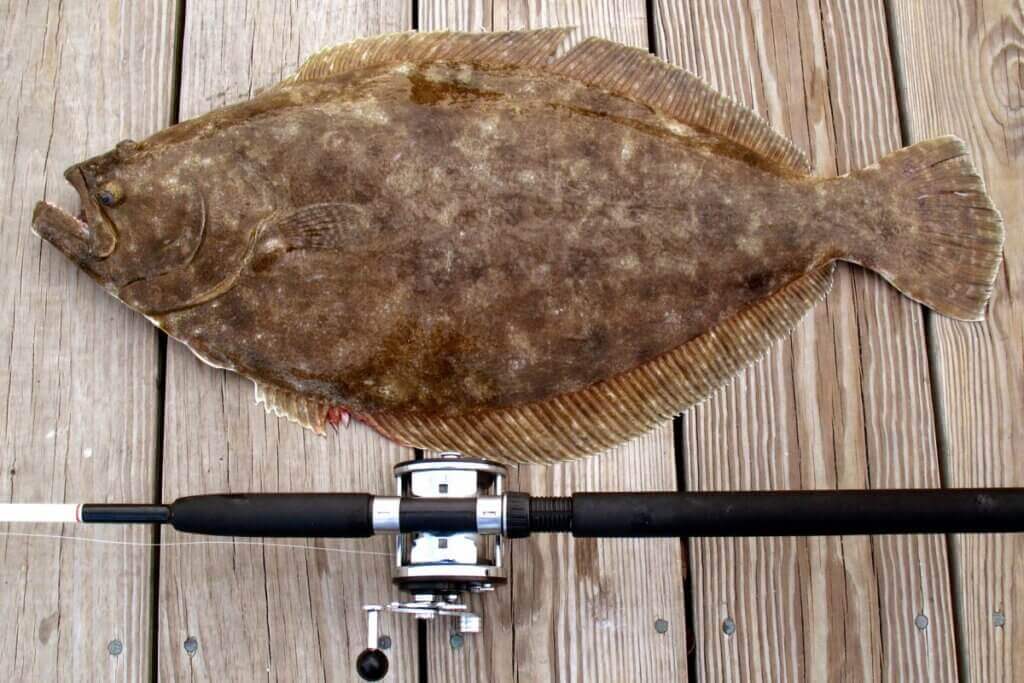
When it comes to choosing a fishing rod for flounder fishing, there are a few factors to consider, such as the fishing technique, personal preference, and the specific conditions in which you’ll be fishing.
Here are some general recommendations for flounder fishing rods:
- Rod Length: Opt for a fishing rod with a length between 6 to 7 feet (1.8 to 2.1 meters). This length provides a good balance between casting distance and maneuverability in various fishing environments.
- Power and Action: Choose a rod with medium power and fast to medium-fast action. This combination allows for better sensitivity and control when detecting bites and setting hooks. It also provides enough backbone to handle the fight from a flounder while still having enough flexibility to absorb sudden movements.
- Rod Material: Graphite or composite rods are commonly used for flounder fishing due to their lightweight and sensitivity. These materials allow you to feel subtle bites and provide a better overall fishing experience. However, fiberglass rods can also be suitable if you prefer a more durable and forgiving rod.
- Rod Handles: Select a rod with a comfortable handle design. Cork or EVA foam handles are popular choices as they provide a secure grip and reduce fatigue during long fishing sessions. Consider the length of the handle as well, as it should allow for proper leverage when casting and fighting fish.
- Line Rating: Match the rod’s line rating to the type of fishing line you intend to use. For flounder fishing, a line rating in the range of 6 to 12 pounds is commonly recommended. This range provides enough strength to handle flounders while maintaining sensitivity.
- Casting or Spinning: Choose between a casting or spinning rod based on your preferred fishing technique. Casting rods are used with baitcasting reels and are ideal for precision casting, while spinning rods pair well with spinning reels and offer ease of use and versatility.
Remember, these are general guidelines, and personal preference plays a significant role in selecting a fishing rod. Consider factors such as your fishing style, the fishing environment, and the average size of flounders in your area when choosing the right rod. If possible, visit a local tackle shop or consult experienced anglers for additional advice tailored to your specific fishing location and circumstances.
Here are some examples of fishing rods suitable for flounder fishing, along with their models and specifications:
- Shimano Trevala S Spinning Rod:
- Model: TVSS63ML.
- Specifications: Length: 6’3″; Power: Medium-Light; Action: Fast; Line Rating: 8-14 lbs; Lure Weight: 1/4 – 3/4 oz; Construction: Graphite composite; Fuji reel seat; Designed for vertical jigging and light tackle applications.
- Ugly Stik GX2 Casting Rod:
- Model: USSP701MH.
- Specifications: Length: 7’0″; Power: Medium-Heavy; Action: Fast; Line Rating: 10-25 lbs; Lure Weight: 1/4 – 3/4 oz; Construction: Graphite and fiberglass composite; Ugly Tuff guides; Durable and sensitive rod with a clear tip design.
- Penn Battalion Inshore Spinning Rod:
- Model: BATIN1220S70.
- Specifications: Length: 7’0″; Power: Medium; Action: Fast; Line Rating: 10-17 lbs; Lure Weight: 1/4 – 5/8 oz; Construction: Graphite composite; Fuji reel seat; Lightweight and responsive rod designed for inshore saltwater fishing.
- Daiwa BG Saltwater Spinning Rod:
- Model: BG-SW.
- Specifications: Length: 7’0″; Power: Medium-Heavy; Action: Fast; Line Rating: 10-20 lbs; Lure Weight: 1/4 – 1 oz; Construction: Graphite composite; Fuji Aluminum Oxide guides; Strong and durable rod designed for saltwater fishing.
- St. Croix Mojo Inshore Spinning Rod:
- Model: MIS70MHF.
- Specifications: Length: 7’0″; Power: Medium-Heavy; Action: Fast; Line Rating: 10-20 lbs; Lure Weight: 3/8 – 1 oz; Construction: SCIII graphite; Kigan Master Hand 3D guides; Designed for inshore fishing with excellent sensitivity and strength.
Please note that these are just a few examples, and there are many other models and brands available in the market. The specifications provided can vary between different rod models within each brand, so it’s essential to review the specific rod model’s specifications and features to ensure it meets your requirements. Additionally, availability may vary depending on your location and the time of purchase. It’s always a good idea to visit local tackle shops, read customer reviews, and consult with experienced anglers for personalized recommendations based on your fishing location and preferences.
Dishes
Flounder is a versatile and delicious fish that can be prepared in various ways.
Here are some popular dishes made with flounder:
- Pan-Seared Flounder. Lightly season flounder fillets with salt, pepper, and herbs of your choice. Heat oil in a pan over medium-high heat and cook the fillets for a few minutes on each side until they are golden brown and cooked through. Serve with a squeeze of lemon juice and garnish with fresh herbs.
- Baked Flounder. Place seasoned flounder fillets in a baking dish. Drizzle with olive oil, lemon juice, and sprinkle with herbs or breadcrumbs. Bake in a preheated oven at 375°F (190°C) for about 12-15 minutes or until the fish is cooked and flakes easily with a fork. Serve with your favorite side dishes.
- Stuffed Flounder. Prepare a flavorful stuffing mixture using ingredients like breadcrumbs, herbs, garlic, onions, and chopped vegetables. Lay the flounder fillets flat and place a portion of the stuffing on top. Roll up the fillets and secure with toothpicks. Bake in the oven until the fish is cooked through and the stuffing is golden and crispy.
- Flounder Piccata. Dredge flounder fillets in flour and season with salt and pepper. In a skillet, melt butter and olive oil over medium-high heat. Cook the flounder fillets for a few minutes on each side until golden brown. Remove the fish from the skillet and set aside. In the same skillet, add lemon juice, capers, and chicken broth, and simmer for a few minutes to make a flavorful sauce. Pour the sauce over the cooked flounder fillets and serve with pasta or rice.
- Flounder Meunière. Dredge flounder fillets in flour seasoned with salt and pepper. In a skillet, melt butter over medium-high heat until it begins to brown. Add the flounder fillets and cook for a few minutes on each side until they are cooked and lightly browned. Remove the fillets from the skillet and add lemon juice, parsley, and capers to the butter in the skillet to make a tangy sauce. Pour the sauce over the fillets and serve with steamed vegetables or a salad.
These are just a few examples of the many delicious ways to prepare flounder. Feel free to experiment with different flavors, seasonings, and cooking methods to create your own unique flounder dishes.

